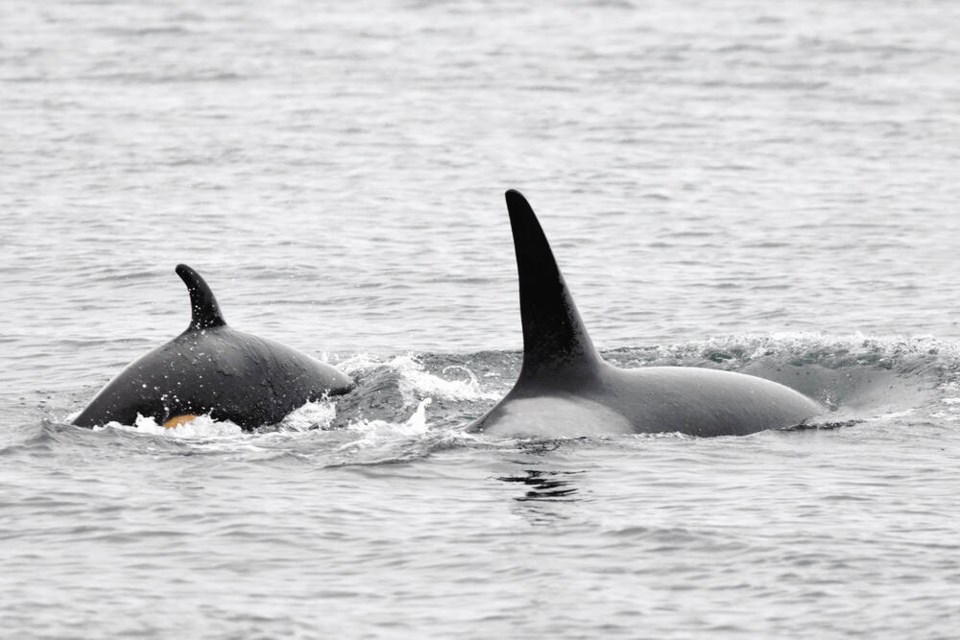All 25 members of J-Pod have returned to the Salish Sea, including the newest member, born in late February.
The pod of endangered southern resident killer whales appeared just off Pender Island on Tuesday and has been hunting for chinook salmon around Haro Strait, the U.S. San Juan Islands, Active Pass and the Strait of Georgia toward the Fraser River.
Scientist Monika Wieland-Shields of the Orca Behavior Institute said it’s only the second time in the past five years that J-Pod has appeared in the Salish Sea in May. That’s a good sign, she said, and the fact the pod seems to be sticking around indicates there is chinook salmon for the whales to feed on.
Chinook salmon is the principal source of food for the southern resident population of orcas, whose numbers in J-, K- and L-pods have dwindled to 75.
Traditionally, J-Pod spends most of the summer in the Salish sea, but with declining chinook-salmon stocks the family of orcas has had to look elsewhere to feed. Lately, the pod has been arriving closer to June and even July.
“We’re very hopeful they stick around and find enough fish,” said Wieland-Shields.
The newest member of the pod, three-month-old female J59, appeared healthy and active, said Wieland-Shields, who photographed the baby with her mom, J37 Hy’shqa, off Lime Kiln Point State Park on San Juan Island on Tuesday.
“The calf looked really good,” said Wieland-Shields. “It was super active, spy-hopping and rolling around. Her mother and big brother were giving [the calf] piggyback rides.”
The overall health of the pod was also deemed to be good. Wieland-Shields and other orca scientists have managed to see all of the members from the sides and top, but she said drone video will provide a more detailed look at their bodies.
“While they were very spread out heading south, they grouped up going north, making it an especially impressive sight to see all 25 whales together.”
Wieland-Shields said she doesn’t know exactly where the pod has spent the past several months, but suspects it may be on the west coast of the Island, around Tofino.
“The fact they have returned is a hopeful sign,” she said.
L-Pod is the largest southern resident group at 33 members, while K-pod has 17.
The Center for Whale Research on San Juan Island does annual counts of the pods each July and December.
Boaters are being reminded to keep their distance from the killer whales. For the third consecutive year, the Department of Fisheries and Oceans said vessels must stay at least 400 metres from all killer whales in southern British Columbia coastal waters between Campbell River and Ucluelet, including Barkley and Howe Sound. The rule is in effect until May 31, 2023.
There are also special fisheries closures in “sanctuary zones” around the Gulf Islands for the southern residents.



